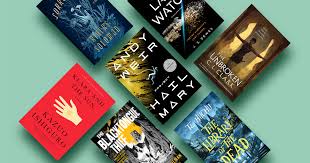The Intriguing Tale of “In Cold Blood” by Truman Capote
Truman Capote’s masterpiece, “In Cold Blood,” is a chilling narrative that blurs the lines between fiction and reality. Published in 1966, this non-fiction novel delves into the brutal murder of the Clutter family in Holcomb, Kansas, and the subsequent capture and trial of their killers.
What sets “In Cold Blood” apart is Capote’s meticulous attention to detail and his ability to weave a compelling story from real-life events. The book reads like a suspenseful thriller, drawing readers into the minds of both the victims and the perpetrators. Through his vivid descriptions and psychological insights, Capote brings a sense of immediacy to the tragic events.
Capote’s writing style in “In Cold Blood” is both haunting and evocative. He paints a vivid picture of small-town America in the 1950s, capturing the nuances of everyday life against the backdrop of a heinous crime. The book raises thought-provoking questions about morality, justice, and human nature, forcing readers to confront uncomfortable truths about society.
“In Cold Blood” has been hailed as a pioneering work in the true crime genre, setting a new standard for literary journalism. Capote’s groundbreaking approach to storytelling has inspired countless authors and filmmakers to explore similar themes of crime, punishment, and redemption.
Even decades after its publication, “In Cold Blood” remains a timeless classic that continues to captivate readers with its raw emotion and stark realism. Truman Capote’s exploration of violence, loss, and redemption in small-town America leaves an indelible mark on all who dare to delve into its pages.
Exploring ‘In Cold Blood’: Key Questions About Truman Capote’s Seminal Work
- Who wrote the book ‘In Cold Blood’?
- When was ‘In Cold Blood’ published?
- Is ‘In Cold Blood’ a work of fiction or non-fiction?
- What is the setting of ‘In Cold Blood’?
- What is the main premise of ‘In Cold Blood’?
- How did Truman Capote approach writing ‘In Cold Blood’?
- What impact did ‘In Cold Blood’ have on the true crime genre?
- Why is ‘In Cold Blood’ considered a classic in literature?
- What themes does Truman Capote explore in ‘In Cold Blood’?
Who wrote the book ‘In Cold Blood’?
“In Cold Blood” was written by the renowned American author Truman Capote. Published in 1966, this groundbreaking non-fiction novel delves into the chilling true story of the Clutter family murders in Holcomb, Kansas. Truman Capote’s meticulous research and captivating storytelling have made “In Cold Blood” a timeless classic in the realms of true crime literature, showcasing his unparalleled ability to blur the lines between fact and fiction with haunting precision.
When was ‘In Cold Blood’ published?
Truman Capote’s iconic work, “In Cold Blood,” was published in 1966. This groundbreaking non-fiction novel captivated readers with its gripping narrative based on the true story of the Clutter family murders in Holcomb, Kansas. The book’s publication marked a significant milestone in literary history, as Capote’s masterful storytelling and meticulous research brought a new level of depth and authenticity to the true crime genre. “In Cold Blood” continues to be celebrated for its enduring impact on both literature and journalism, solidifying Capote’s legacy as a pioneering writer.
Is ‘In Cold Blood’ a work of fiction or non-fiction?
“In Cold Blood” by Truman Capote is a unique blend of fiction and non-fiction, blurring the lines between the two genres. While the book is based on real events – the brutal murder of the Clutter family in Kansas – Capote’s narrative style and storytelling techniques give it a fictional quality. Through his meticulous research and attention to detail, Capote creates a gripping account that reads like a novel, yet remains grounded in the facts of the case. This hybrid approach to storytelling challenges traditional distinctions between fiction and non-fiction, making “In Cold Blood” a compelling and thought-provoking exploration of truth and storytelling.
What is the setting of ‘In Cold Blood’?
The setting of Truman Capote’s seminal work, ‘In Cold Blood’, plays a pivotal role in shaping the narrative and atmosphere of the story. The book is primarily set in the quiet town of Holcomb, Kansas, a peaceful rural community that becomes the scene of a brutal and senseless crime. Capote masterfully captures the essence of small-town America in the 1950s, painting a vivid portrait of the landscape, culture, and people that inhabit this seemingly idyllic place. The stark contrast between the serene backdrop of Holcomb and the shocking events that unfold within its borders serves to underscore the chilling nature of the story and adds an extra layer of complexity to the tale.
What is the main premise of ‘In Cold Blood’?
The main premise of Truman Capote’s ‘In Cold Blood’ revolves around the true story of the brutal murder of the Clutter family in Holcomb, Kansas. Through meticulous research and vivid storytelling, Capote delves into the psychological motivations behind the crime and its impact on both the victims’ loved ones and the wider community. The book explores themes of violence, justice, and human nature, blurring the lines between fiction and reality to create a compelling narrative that challenges readers to confront uncomfortable truths about society and morality. ‘In Cold Blood’ stands as a groundbreaking work in the true crime genre, offering a haunting portrayal of a heinous act that continues to resonate with audiences worldwide.
How did Truman Capote approach writing ‘In Cold Blood’?
Truman Capote approached writing “In Cold Blood” with a unique blend of journalistic precision and literary craftsmanship. He immersed himself in the details of the Clutter family murder case, conducting extensive interviews and research to reconstruct the events with meticulous accuracy. Capote’s narrative style in the book is both objective and deeply empathetic, offering a nuanced portrayal of the victims, the perpetrators, and the community affected by the crime. By combining factual reporting with vivid storytelling techniques, Capote created a gripping account that transcends traditional genre boundaries and continues to resonate with readers as a powerful exploration of crime, justice, and human nature.
What impact did ‘In Cold Blood’ have on the true crime genre?
Truman Capote’s “In Cold Blood” had a profound impact on the true crime genre, revolutionising the way real-life stories of crime and punishment were told. By blending elements of fiction with meticulous journalistic research, Capote created a narrative that transcended traditional boundaries. The book set a new standard for literary journalism, inspiring a wave of authors and filmmakers to explore similar themes of violence, morality, and human nature. “In Cold Blood” not only captivated readers with its gripping storytelling but also challenged societal perceptions of crime and justice, leaving a lasting legacy on the true crime genre that continues to influence works in the field to this day.
Why is ‘In Cold Blood’ considered a classic in literature?
“In Cold Blood” is revered as a classic in literature for its groundbreaking blend of true crime storytelling and literary craftsmanship. Truman Capote’s meticulous research and immersive narrative style elevate the book beyond a mere factual account of a murder case. The depth of character exploration, the evocative portrayal of small-town America, and the moral complexities it delves into make “In Cold Blood” a timeless work that transcends its genre. Capote’s ability to humanize both victims and perpetrators, coupled with his keen insights into human nature and society, cements the book’s status as a literary masterpiece that continues to resonate with readers across generations.
What themes does Truman Capote explore in ‘In Cold Blood’?
Truman Capote delves into a myriad of profound themes in his iconic work, ‘In Cold Blood’. Through the lens of this non-fiction novel, Capote explores the complexities of morality, justice, and human nature. The narrative delves deep into the dark realms of crime and punishment, shedding light on the fragility of innocence and the depths of depravity. Additionally, themes of empathy, compassion, and the search for meaning in a seemingly senseless world permeate throughout the story. Capote’s exploration of these themes not only challenges readers to confront uncomfortable truths but also invites reflection on the essence of humanity itself.




